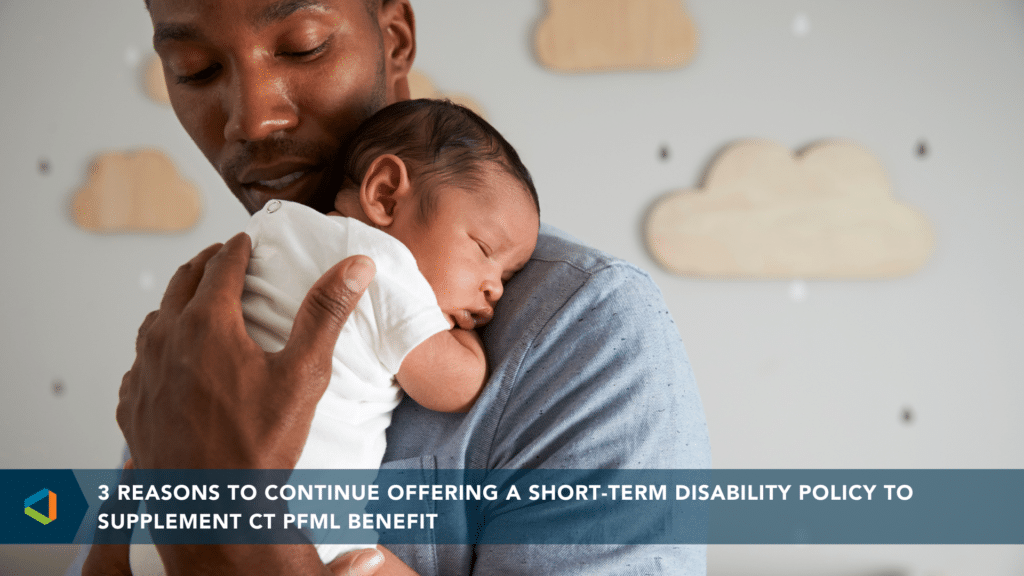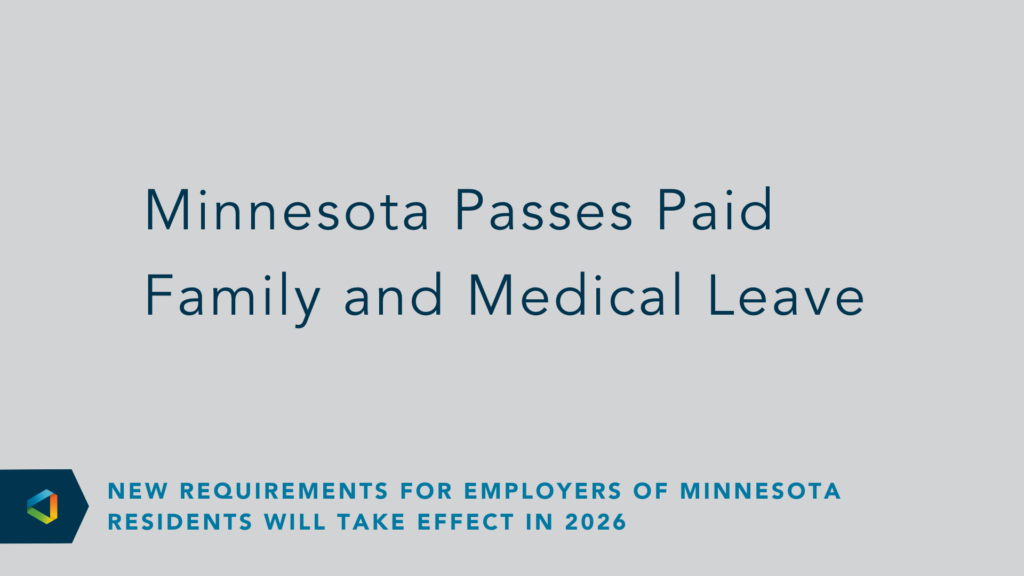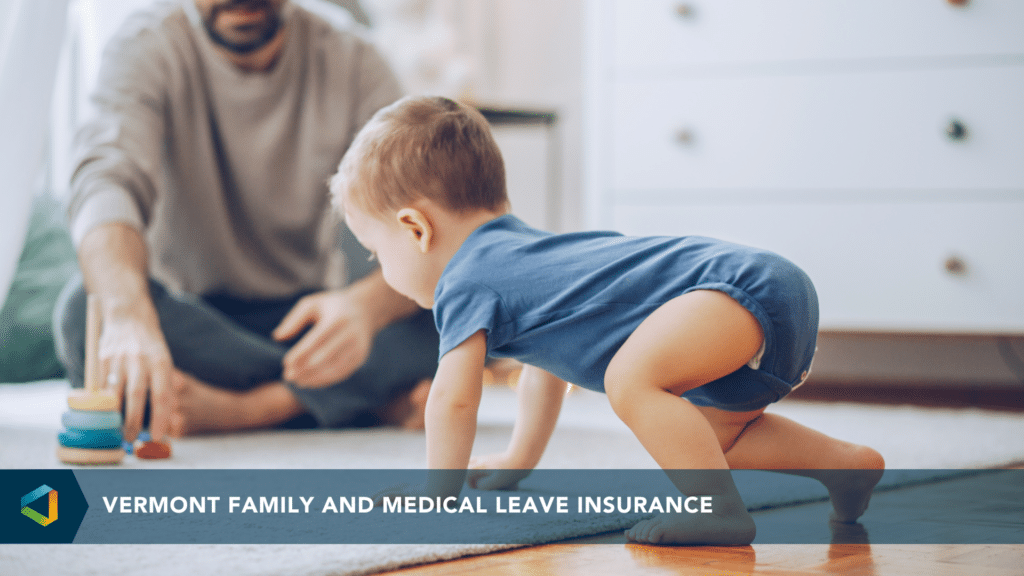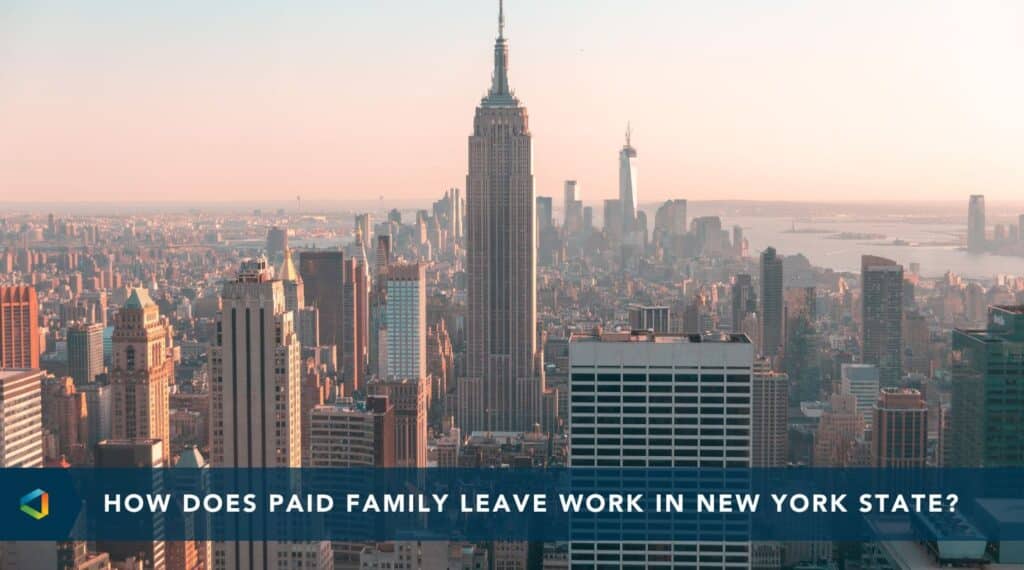Better Benefits
Vermont Paid Family & Medical Leave Won't Pass This Year. Now What?
Vermont Paid Family & Medical Leave Won't Pass This Year. Now What?
With the news that Vermont Paid Family & Medical Leave (PFML) will not pass the legislature this session, employers still have many questions regarding paid leave and current benefit offerings.
While it is very possible this law will pass in the 2024 legislative session, it is still a good time to get a better understanding of what the current legislation is, what lawmakers are proposing, and how this interacts with other employee benefits. Here are the most frequently asked questions I've been fielding from employers of all sizes on the topic of Vermont Paid Family & Medical Leave as well as a little more background on this legislation and what it might mean for your business.
1. What is Paid Family Medical Leave (PFML)? How is it different from Family Medical Leave Act (FMLA)?
Most employers are familiar with FMLA, the federal law that requires employers to provide job security for a period of time to employees who have to take leave due to their own health condition, or to care for a sick family member. What not everyone realizes, however, is that FMLA leave is generally unpaid. There is no requirement in the federal law that employers continue to pay their employees during this type of leave. Since FMLA leave can usually last up to 12 weeks, this could be a long time for someone to go without a paycheck. As a result, many people forego such leave even when it would be beneficial to their health or that of their loved one, because they can’t afford to miss their pay. To provide a partial fix to this problem, various states have passed their own family and medical leave bills, with a “Paid” component meaning employers must provide a certain amount of paid leave to their employees who miss work due to their own or a family member’s health. To date, 15 states have put in place some type of Paid Family/Medical Leave legislation, including Vermont. That means that if a company has employees working in one of those states, those employees must be granted paid leave according to that state’s specific law.
2. What is the current Vermont law surrounding Paid Family Leave?
The Vermont Paid Family and Medical Leave law is very recent, taking effect on July 1st, 2023 and will be offered to Vermont state employees only. On July 1st, 2024, it will be open to voluntary participation by all Vermont-based employers with 10 or more employees. Employers with fewer than 10 employees will be eligible to join on July 1st, 2025. The program is administered by The Hartford, and employers will purchase the coverage directly from the carrier. The cost for the plan will vary from employer to employer, depending on their employee count, industry, and demographics. For companies that opt in, employees will be able to take leave for their own health condition, or for the following:
- Birth of a child
- Placement of a child for adoption
- Caring for a spouse, child, stepchild, foster child, parent, or parent-in-law with a serious health condition
- Military caregiver leave
The benefit will be 60% of the employee’s weekly wages and will kick in on the first day of family leave and the 8th day of medical leave. Benefits will continue for up to six weeks during a 12-month period.
3. What About the Pending Legislation?
Because the current law is voluntary, the Vermont legislature proposed a mandatory PFML law in early 2023. This would require all Vermont employers, regardless of size, to offer PFML to their employees and would be funded through a payroll tax. The bill has passed the House but as of this date (5/8/23) it is clear that the Senate will not be passing this bill this session. The bill provided for up to twelve weeks of leave during a 12-month period, and would provide a benefit of 90% of weekly wages with no waiting period. The benefit would be funded by a 0.55% payroll tax. Employees would be able to take leave for their own health condition, or for the following:
- Birth of a child
- Placement of a child for adoption
- Caring for a spouse, child, stepchild, foster child, parent, parent-in-law, grandparent, grandchild, sibling, sibling-in-law, or domestic partner with a serious health condition
- Military caregiver leave
- Bereavement leave (up to 2 weeks)
- Safe Leave (12 weeks unpaid), due to being a victim of domestic violence, sexual assault, or stalking.
Although this bill will not become law in 2023, it will get picked up again in the second half of the biennium (January 2024), and by then enough groundwork may have been down to get it through both the House and Senate. PFML has been a priority of the Vermont legislature for years and with the Democratic/Progressive supermajority, it seems likely that some version of this will pass in 2024.
4. Should Vermont Employers Implement PFML Now?
The short answer is yes; if an employer can afford to provide paid leave to their employees, that is the humane and supportive thing to do. A paid leave policy can be offered by any employer at any time, and since Vermont does not yet have a mandatory law, employers are free to structure this policy however they like as long as it is not discriminatory. Some employers offer a paid parental leave, for example, of several weeks for employees of any gender who have a baby or adopt a child. This benefit is funded by the employer through payroll and is documented in their employee handbook. This is not an insurance product, but just an internal HR policy and something any employer is free to establish. As for the current Vermont PFML which is voluntary; private employers are not eligible to participate until 2024 but there is no reason an employer could not establish a similar policy now and pay for it themselves. There is currently no insurance policy to cover paid family leave in Vermont, but there are insurance policies for medical leave (typically referred to as Short Term Disability – see below). As far as adopting any Vermont state plan goes, there are no such plans currently available to private employers, and if a mandatory plan is passed and goes into law, it will most likely not be effective for several years.
5. What is Short Term Disability and how is it different from PFML?
Short Term Disability (STD) is currently available for Vermont employers to purchase, and is a very common employee benefit. STD provides a benefit of wage replacement to employees who are unable to work due to their own illness or injury. It does not provide any wage replacement for employees needing to care for a family member. Maternity is typically covered for the mother only and generally only for 6-8 weeks. Other illnesses or injuries will be covered for up to 26 weeks and typically cover 60-70% of the employee’s wages. There can be a waiting period of 0-30 days before the benefit begins, and each employer can design the policy the way they see fit. Unlike most state PFML plans, a typical STD plan allows employees to take more than one leave during the same year. For example, someone who took a 6-week Short Term Disability leave early in the year due because of an injury or illness, could subsequently take another leave later in the year (up to 26 weeks) for a different condition (or recurrence of the original condition). With most state plans, there is a limit of 6 – 12 weeks during any 12 month period, meaning if someone uses their benefit early in the year, there is no remaining benefit ‘bank’ should something happen to them later in the year. For this reason, employers should consider maintaining their own STD plan even in states where there is a state-mandated leave plan.
6. I have employees in multiple states. How can I keep track of all these leave laws?
Great question! If you have a small number of employees in two or three different states, you can probably keep track of the different state statutes on a spreadsheet or in your HR database. But because of how rapidly new state legislation is coming about, you should set a calendar reminder to check for new developments every few months.
If you have a larger number of employees in a larger number of states, you almost certainly should be outsourcing this service to a Leave of Absence (LOA) Administrator. These are firms that specialize in keeping track of all state leave legislation, and will make sure you are complying with each state in which you have employees. Keep in mind that the legislation follows the state in which the employee works, so if you have employees who have relocated to another state and are now working remotely, they are now subject to the laws of the state in which they live/work. This could expose you as the employer to significant liability if you are not up to speed on that state’s specific requirements. Hiring a LOA administrator is a relatively low cost, but will not only assure your employees receive the correct benefits, it will also ease the administrative burden on your HR team, as well as protect the employer from significant penalties for getting the leave benefits wrong. It is possible LOA management could be administered by the same company offering your STD, which means you would have one point of contact for any leave and the administrator would coordinate the STD claim process as well.
Our Leave of Absence team has put together a toolkit that walks you through compliance hurdles and best practices step-by-step- download it here.
In Summary
Paid Family Leave is something any employer can implement at any time. You do not have to wait for Vermont to pass a mandatory law to start offering this nor do you have to wait for the current voluntary plan to open to private employers. PFML is something you can structure as an internal policy, using a Short Term Disability policy to insure the medical leave and maternity portion, and structuring the family leave however you see fit.
For additional information on leave of absence and best practices, check out our Leave of Absence Mangement Toolkit.




